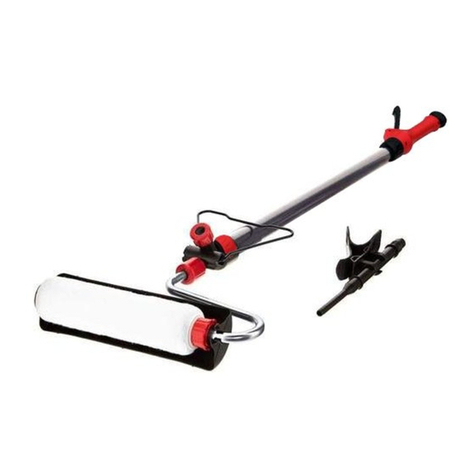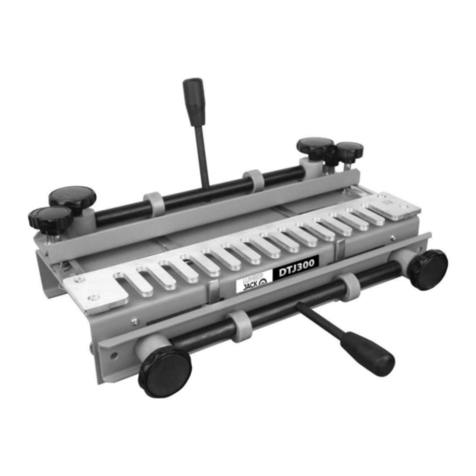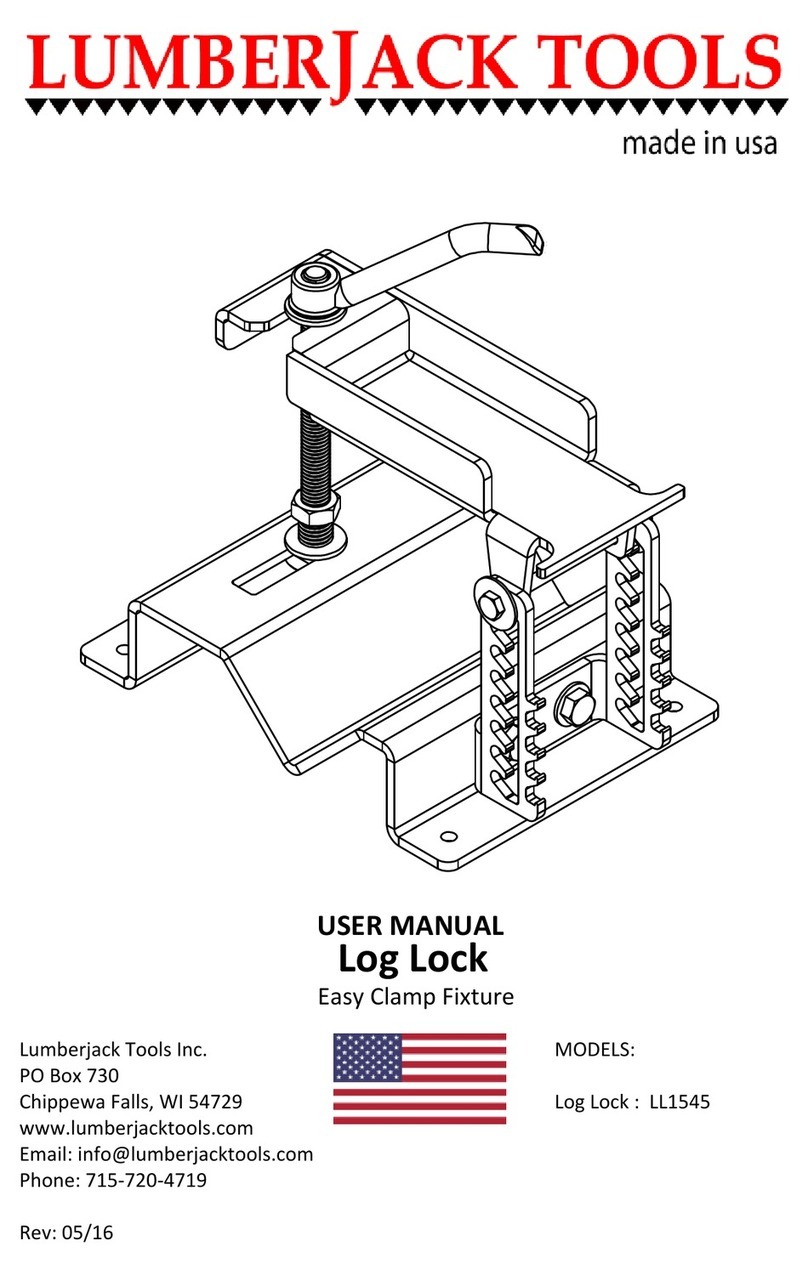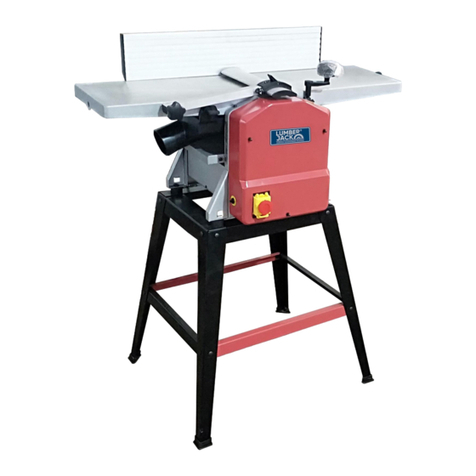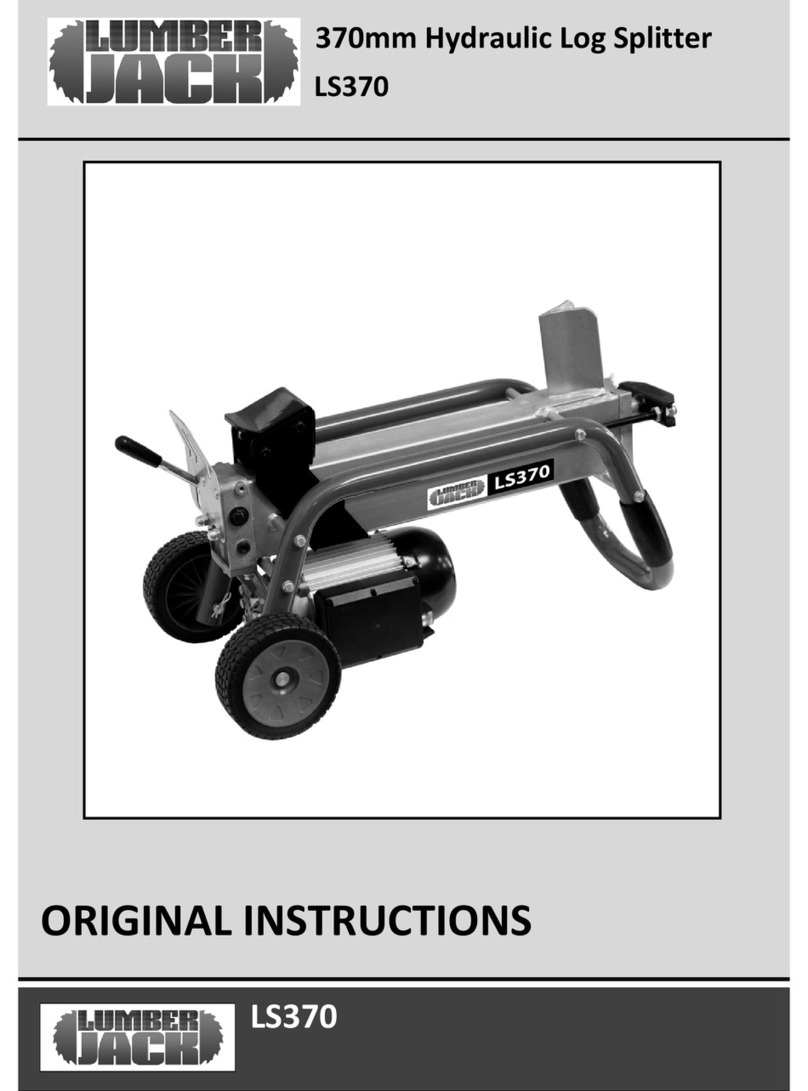
3
Before beginning any project, carefully read and follow ALL safety and
operational instructions for any tools or devices you will be using. Failure to do
so may cause physical harm to yourself or those around you. If you feel
uncomfortable using our staking tool, STOP immediately. Lumberjack Tools
assumes no responsibility for injury caused to the operator, bystander, or tools
used in conjunction with the use or misuse of our tools.
NEVER OPERATE POWER TOOLS UNDER THE INFLUENCE OF
DRUGS, ALCOHOL, OR ANY MEDICATIONS
ALWAYS WEAR SAFETY GLASSES, DUST MASK, AND ANY OTHER
PERSONAL PROTECTION ITEMS AS NEEDED
NEVER WEAR LOOSE ITEMS THAT COULD BE CAUGHT IN MOVING
PARTS. SECURE LOOSE OR LONG HAIR AWAY FROM AREA
WE STRONGLY RECOMMEND A SINGLE-SPEED, GEAR DRIVEN
DRILL WITH RPMS OF 500 OR LESS. EXCEEDING THESE RPMS MAY
RESULT IN DAMAGE TO THE TOOL
ALWAYS DISCONNECT POWER AND ALLOW DRILL TO COME TO A
COMPLETE STOP BEFORE INSTALLING, REMOVING, OR ADJUSTING
THE TOOL
NEVER APPLY BENDING FORCE (SIDE LOADING) TO THE TOOL. SIDE
LOADING COULD CAUSE THE SHANK TO FAIL, OR MAY RESULT IN
BLADE DAMAGE
ALWAYS SECURE THE LOG IN A VISE OR CLAMP PRIOR TO
STARTING YOUR DRILL. FAILURE TO DO SO MAY RESULT IN INJURY
ALWAYS HANDLE THE BLADES WITH EXTREME CARE! FAILURE TO
DO SO MAY RESULT IN SERIOUS INJURY
WHEN EXCESSIVE FORCE IS REQUIRED TO CUT, RE-SHARPEN OR
REPLACE THE BLADES. A SHARP TOOL IS A SAFE TOOL!
NEVER PUT HANDS OR ANY BODY PART INSIDE THE TOOL WHILE THE
BLADES ARE ATTACHED! DOING SO MAY CAUSE SERIOUS INJURY


